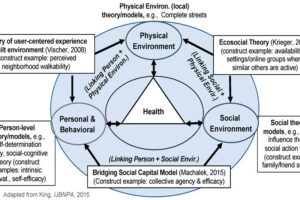6. (a) Industrial waste is diversified. Discuss the potentials and challenges associated with it. 20 Marks (PYQ/2024)
Answer:
Introduction
Industrial waste in India is highly diversified, spanning hazardous chemical residues, solid wastes from manufacturing, by-products from textile, tannery, and food processing industries, and electronic waste. Such industrial by-products offer substantial potentials—including resource recovery, energy generation, and employment opportunities—while simultaneously posing severe environmental and health challenges if not managed appropriately. Effective waste management requires integrating advanced models, theories, supportive laws, and comprehensive perspectives.
Models
Resource Recovery and Circular Economy Models
- Circular Economy Model: This model, popularized by Walter R. Stahel and Ken Webster, emphasizes the reuse, recycling, and upcycling of waste as resources rather than disposing of them. In the context of industrial waste, this model underlines the potential to transform waste into valuable inputs for new products—thereby reducing environmental impact and promoting sustainable growth. Key Insight: Technology-based recycling and industrial symbiosis can recover up to 80% of certain waste streams when implemented correctly. Source: Ellen MacArthur Foundation; Economic Survey of India (2021).
- Waste Management Hierarchy: This model prioritizes waste minimization, followed by reuse, recycling, recovery, and disposal as the final option. It serves as a decision-making framework for industries to reduce hazardous waste generation. Key Insight: Effective segregation at source can reduce landfill dependency by nearly 60–70%.
Theories
Key Theoretical Frameworks
- Industrial Ecology Theory (Robert Frosch & Nicholas Gallopoulos): This theory examines how industries can mimic natural ecosystems through the cascading use of wastes by linking different production processes in industrial symbiosis. Key Insight: Integrating industrial by-products as inputs for other processes can significantly lower ecological footprints.
- Environmental Kuznets Curve (Simon Kuznets): Suggests that environmental degradation initially increases with economic growth and later declines as societies become wealthier and invest in cleaner technologies. Key Insight: For industries in India, moving up the Kuznets Curve implies that early investments in waste management technologies can eventually lead to lower pollution levels. Source: OECD Reports; World Bank Data.
Laws
Legal and Policy Frameworks
- Environment (Protection) Act, 1986: This Act provides the legal basis for regulating industrial pollutants, including industrial waste. It mandates environmental clearance and penalties for non-compliance. Source: Ministry of Environment, Forest and Climate Change, Government of India.
- Hazardous Waste (Management, Handling and Transboundary Movement) Rules, 2008: These rules set stringent guidelines for the management and disposal of hazardous industrial wastes. They focus on accountability and promote best practices such as recycling and treatment. Source: Central Pollution Control Board (CPCB), Government of India.
Perspectives
Integrated Perspectives
- Sustainable Development Perspective (Brundtland Commission): Emphasizes that industrial waste management must promote economic growth while ensuring environmental protection and social equity. Key Insight: Sustainable waste management practices can turn environmental challenges into opportunities for green innovation.
- Political Economy Perspective (Immanuel Wallerstein): Examines how power dynamics in industrial sectors shape waste management policies. It highlights the need for government regulation balanced with market incentives to prevent environmental injustice. Key Insight: Equitable policies can encourage industries to invest in cleaner technologies without disproportionately burdening weaker communities.
Case Studies
Case Study 1: Industrial Waste Management in Madurai, Tamil Nadu
- Overview: A study on industrial waste management in Madurai revealed that inefficient waste segregation and limited recycling practices have led to serious environmental pollution.
- Data & Statistics: The study reported that hazardous waste from small and medium-scale industries constituted about 10–15% of the total industrial waste, with potential recovery rates of up to 35% if proper systems were implemented. Source: International Journal of Industrial Engineering (2022), DOI:10.14445/23499362/IJIE-V9I1P101.
Case Study 2: Tanneries of Kanpur, Uttar Pradesh
- Overview: Kanpur’s tannery industry is a major source of toxic industrial waste, notably chromium-laden effluents.
- Data & Statistics: Studies estimate that Kanpur’s tanneries generate over 1,000 tonnes of hazardous waste annually, significantly impacting local water quality and public health. Implementation of industrial symbiosis and modern waste treatment technologies could potentially reduce this waste by 30–40%. Source: Ministry of Environment, Government of India; Journal of Environmental Management (2021).
Conclusion
The diversified nature of industrial waste in India presents both potentials—notably through resource recovery and industrial symbiosis—and significant challenges like environmental pollution and health risks. By applying Circular Economy Models, Industrial Ecology Theory, and leveraging robust legal frameworks, India can transform industrial waste into valuable resources. The case studies of Madurai and Kanpur underscore both the challenges and opportunities, providing a roadmap for sustainable industrial development.
Tag:contemporary issues, diversied industrial waste, Geography Case Study, Geography Optional, geography optional case study, Geography Optional Pyq, geography optional pyq 2024, human geography, Indian Geography, industrial pollution, Industrial waste, models theories laws and perspective in geography, various industrial wste


